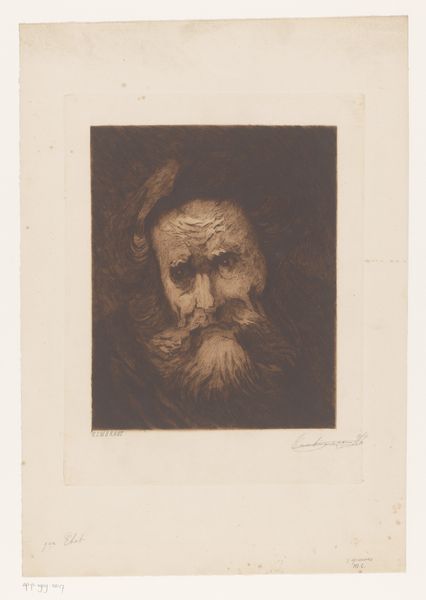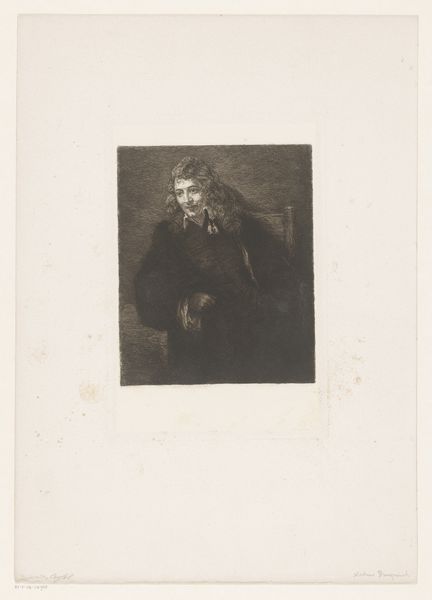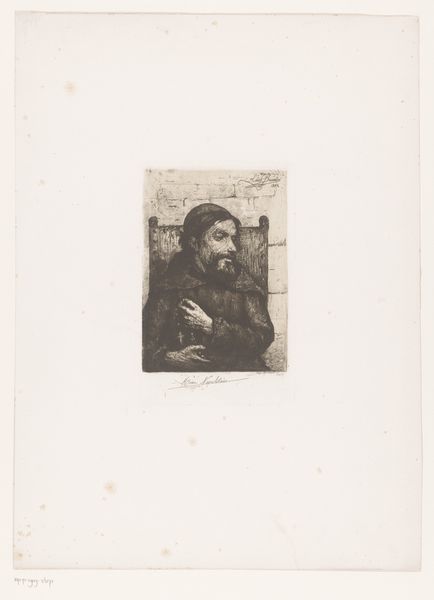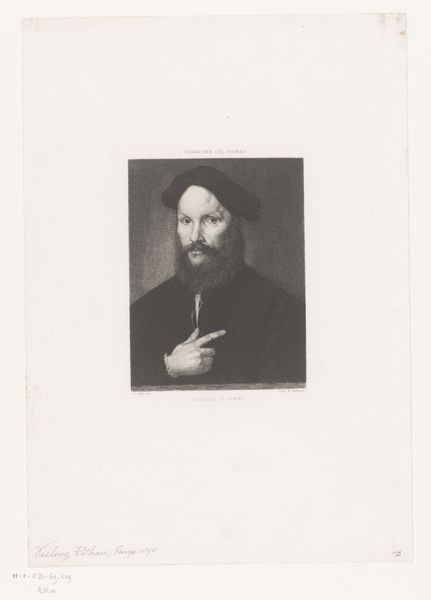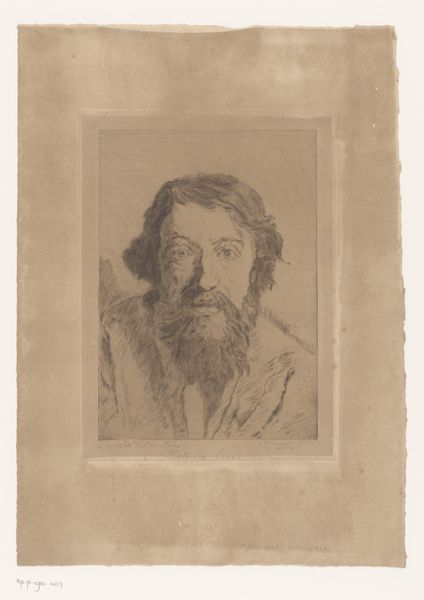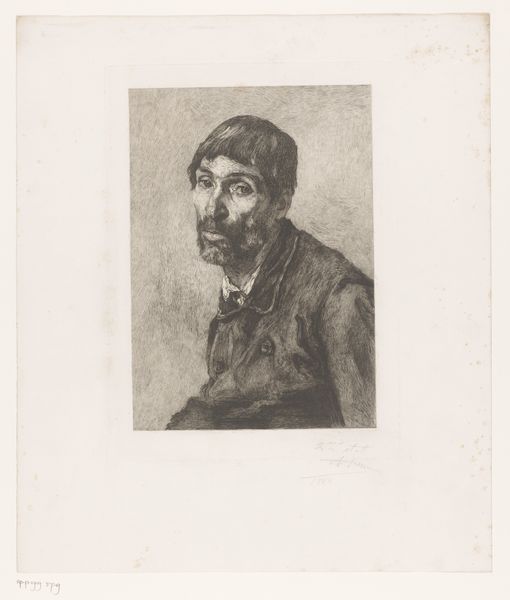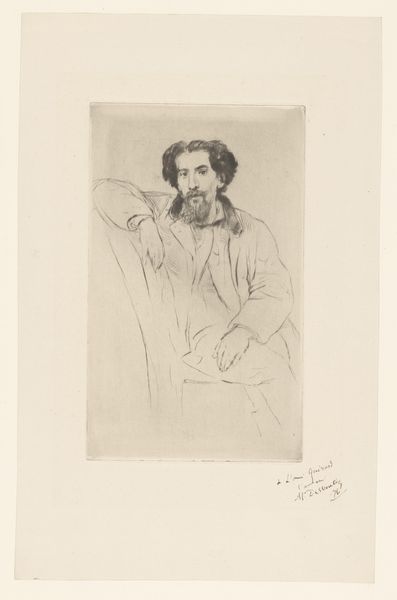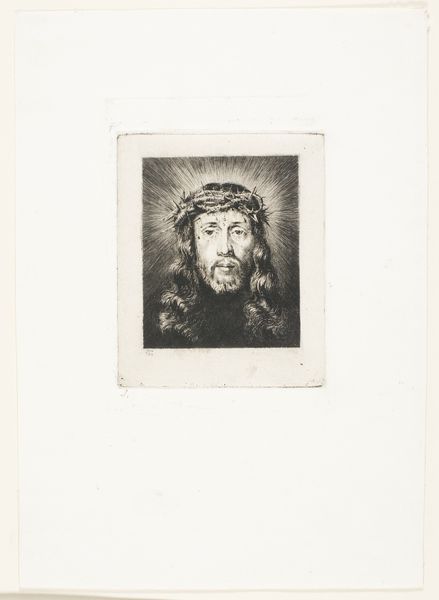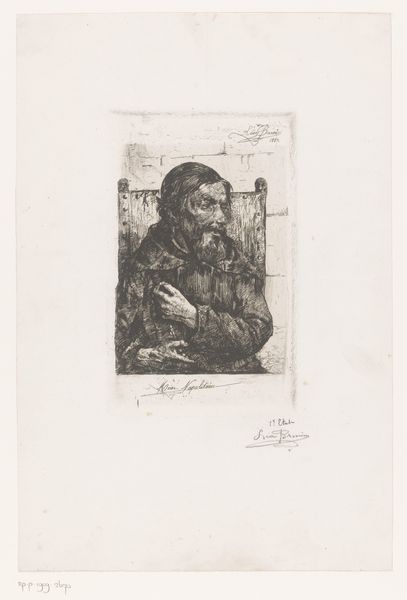
print, graphite, engraving
#
portrait
#
self-portrait
# print
#
graphite
#
northern-renaissance
#
engraving
Dimensions: height 373 mm, width 280 mm
Copyright: Rijks Museum: Open Domain
Editor: This is Johann Leonhard Raab's "Portret van Albrecht Dürer", created sometime between 1835 and 1899. It’s a print, seemingly in graphite and engraving, capturing Dürer’s likeness. I find it kind of… intense. It's so detailed for a print, but his expression is what really grabs me. What do you see in this piece? Curator: Intense is a great word. It almost feels like stepping back in time and meeting the master himself, doesn't it? Raab really captured Dürer’s iconic gaze, that blend of intelligence and self-awareness. What's fascinating is how this 19th-century artist interpreted a Renaissance giant. He wasn’t just copying; he was channeling Dürer. Notice how the lines create almost a velvet texture. Editor: It does look incredibly tactile. Why recreate it as a print, though? What's the point of not painting it, since this print is not by Durer himself? Curator: Well, prints democratized art. They allowed Dürer’s image, even filtered through Raab's vision, to circulate more widely. Think of it as 19th-century meme culture! A way to spread the gospel of Dürer, if you will, and grapple with his legacy. And maybe for Raab, it was a personal meditation. I like to imagine him late at night, meticulously re-creating the master’s face, wondering about his place in the art historical continuum. Editor: That’s a really interesting way to look at it. So it’s not just about replication but also about interpretation and accessibility. I suppose that's like when everyone wants to be their version of Banksy. Curator: Exactly. It’s about keeping the artistic conversation alive. Each time someone engages with a masterpiece, something new is born. Editor: I guess I was thinking too literally about “copying.” Now I’m seeing it as a tribute, or even a conversation across centuries. Thank you for the perspective!
Comments
No comments
Be the first to comment and join the conversation on the ultimate creative platform.
